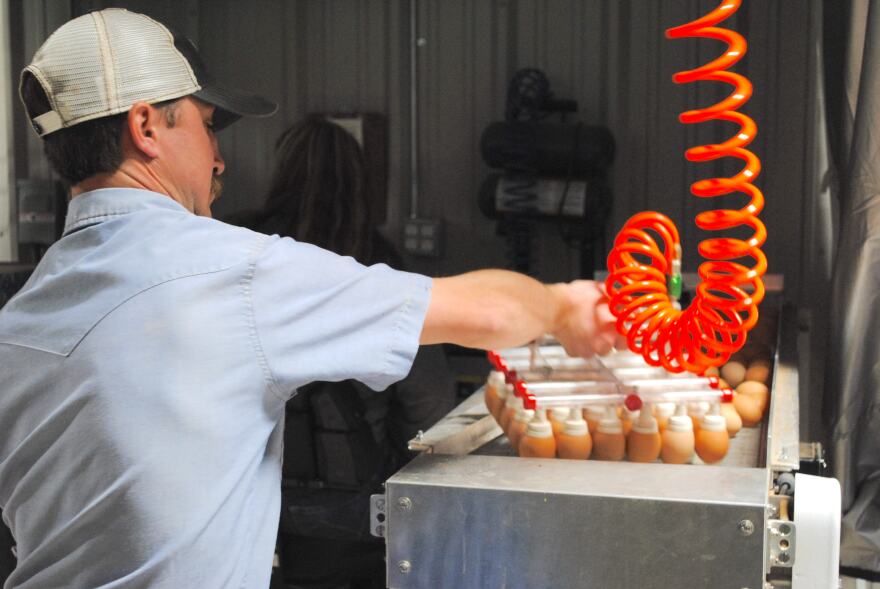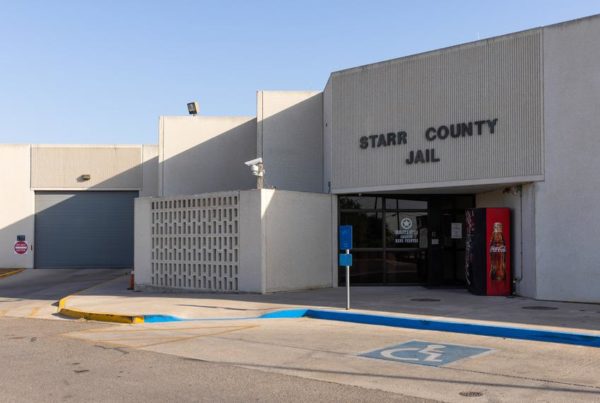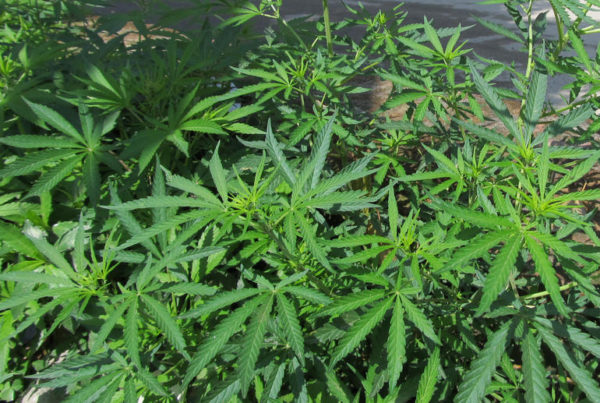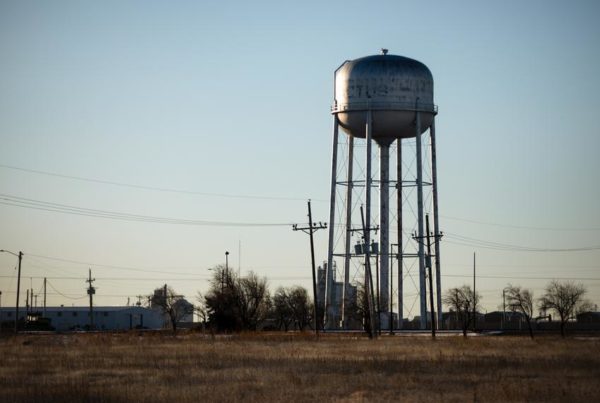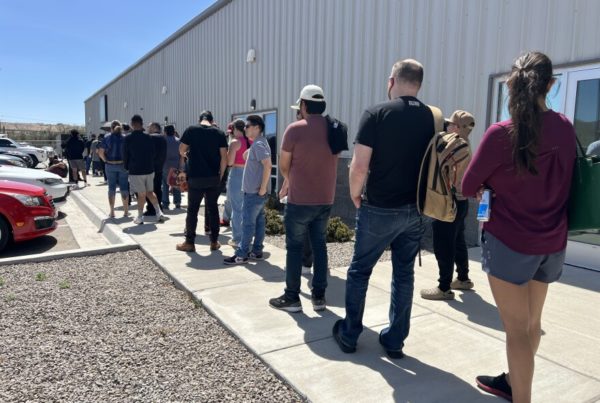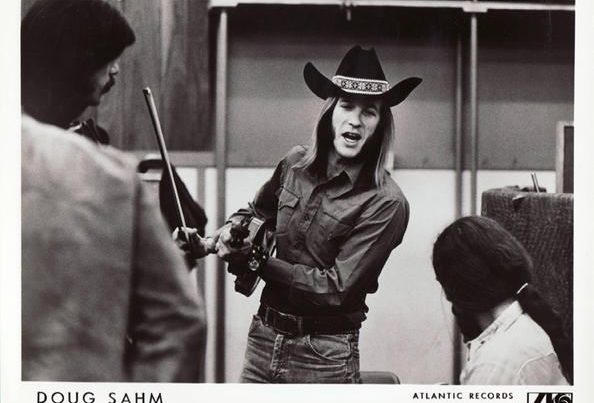From KTTZ:
Chad Wall has been a farmer in Ropesville for more than 20 years, so he noticed right away when conditions on his land started to change.
“The main thing was the soil degradation that we were seeing from high winds and prolonged periods of dry conditions,” Wall said. “When you see your topsoil piling up at the edge of the field, or on the highway, it was not uncommon. It was really my concern from seeing that that made me want to find another way.”
Wall turned to science for a solution, and found regenerative agriculture.
Some West Texas farmers have turned to regenerative farming techniques to improve their land and crops as extreme heat, strong winds and drought conditions have worked against them for years. Regenerative farming includes holistic practices like no-tilling the land, rotational grazing through livestock and steering clear of any chemical additives.
Wall said he started to understand the issue the more he dug into the topic. He changed how he was farming, and now has seen so much improvement in his land that he started Natural Ecosystem Restoration, a consulting business to help other farmers facing the same issue.
“It led to significant changes in my farming operation,” Wall said. “The soil needs the same things that we need – it needs air, water, food and protection. So most everything that we focus on is how do we stimulate biology? How do we keep from killing biology in the soil?”
On his land, Wall has recently gotten back into growing some cotton, but he primarily grows small grain and cover crops. He also has lambs, cows and chickens that feed off the land and graze it. He doesn’t till, spray chemicals or use man-made fertilizer.
“The more we stimulate the biology, the more the biology makes all of those nutrients available to the plant,” Wall explained. “And the less fertilizer we need, because that’s actually already housed in the soil and the atmosphere. We just need an ecosystem that is functioning at a high level so that it can make those things available to the plant.”
Wall said the changes he’s made has helped make his land more resilient and able to holds water better, which helps fight drought conditions. He said he understands why farmers would be concerned about switching to regenerative techniques, but there’s ways to compromise.
“Even if your desire is to remain with conventional practices,” Wall said, “you can still be somewhat regenerative and definitely make a lot of progress in that direction, just by doing more of the things that are beneficial for the soil biology and eliminating more of the things that are not.”
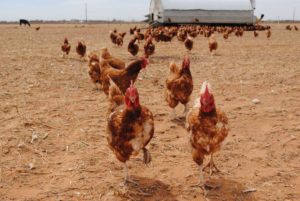
The chickens at Alcove Farms help keep the soil healthy through rotational grazing.
Jayme Lozano / Texas Tech Public Media
Alcove Farms is another one of a few regenerative farms in Lubbock. Lying on the outskirts of North Lubbock, the farm is home to nearly 4,000 chickens that graze the now-healthy land.
“When you get to the root of the problem with farming, the problem is making the soil healthy,” said Amos Green, the farm manager at Alcove Farms. “If you can make the soil healthy, everything above that is going to be healthy.”
Since Alcove Farms started in 2016 with 50 chickens, Green said the focus has been on regenerating the soil through rotational grazing.
“With that type of process, where they graze it, eat some of it and leave their benefit behind, all of that together with the sunshine and rain is what makes soil healthy,” Green said. “It puts the nutrients back into the soil to make the plant life flourish after they move on.”
The process worked, and as the land got healthier, they were able to grow the operation. They’ve begun growing more vegetables, like pumpkins and watermelons, and Green said even their eggs are healthier.
“We don’t spray chemicals on anything,” Green explained. “We get to provide a really healthy egg to all of Lubbock, and what is produced is a really healthy vegetable compared to a farm that sprays chemicals. Not saying that spraying chemicals is necessarily bad, but what you spray onto those vegetables, you get in those vegetables.”
While Green praised the regenerative methods, he said it’s important to know that it’s not a “new” technique. To get their land in healthier condition, they had to use more traditional ways.
“It’s actually something that bison did back in the 1800s roaming the country,” Green said. “So it’s really getting back to the way it was before we tried to make a gigantic profit off of farming.”
Like Wall, Green said the land is more resilient now to the extreme weather shifts in Lubbock and it holds groundwater better. This is one of the keys to farming in West Texas, as the region has had a rough and dry start to the year.
According to the U.S. Drought Monitor, West Texas is fluctuating between extreme and exceptional drought conditions. During a recent presentation on water in the South Plains, Amy Hardberger, the director for the Texas Tech Center for Water Law and Policy, showed a chart depicting water availability in the next 50 years.
“The vast majority of what you’re drinking, or whatever you’re doing that involves water, including ag, is groundwater,” Hardberger explained as she pointed at the chart on the screen. “Notice this downward trajectory – considerably less groundwater is being used.”
Hardberger said the reason less groundwater is being used is clear – there is not enough of it to cover current or projected needs. Because of this, she said a solution needs to be found within the next few years.
“If necessity is the mother of all inventions,” she said, “we better get to inventing very quickly.”


